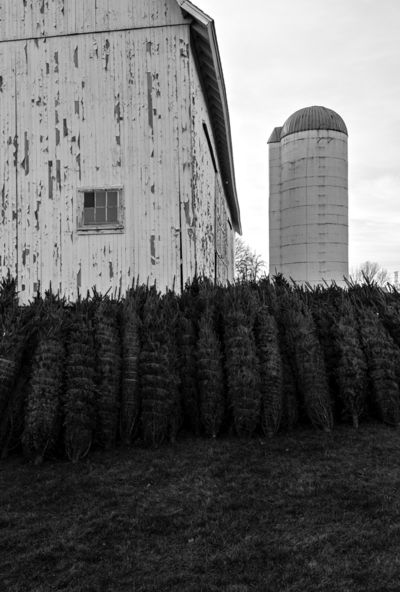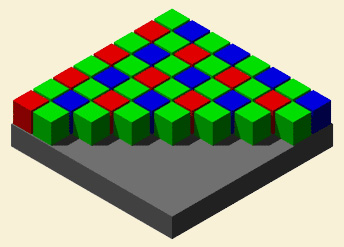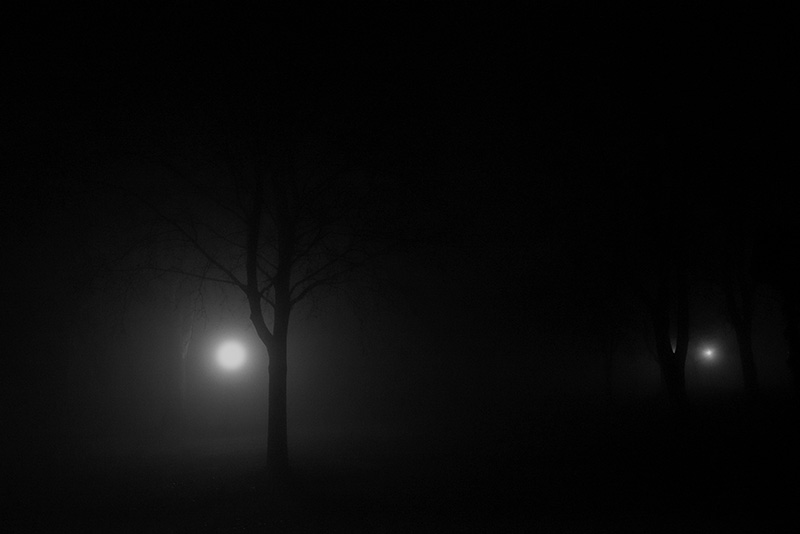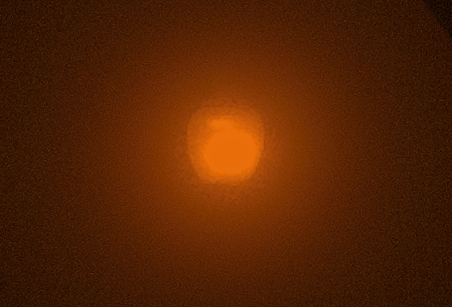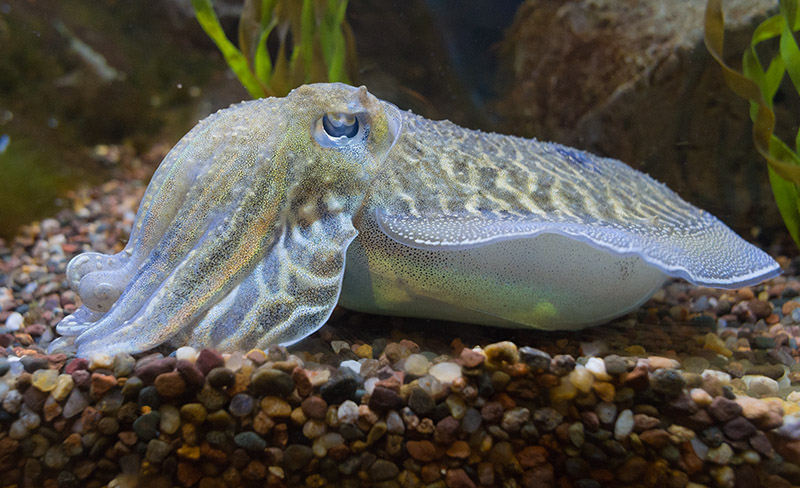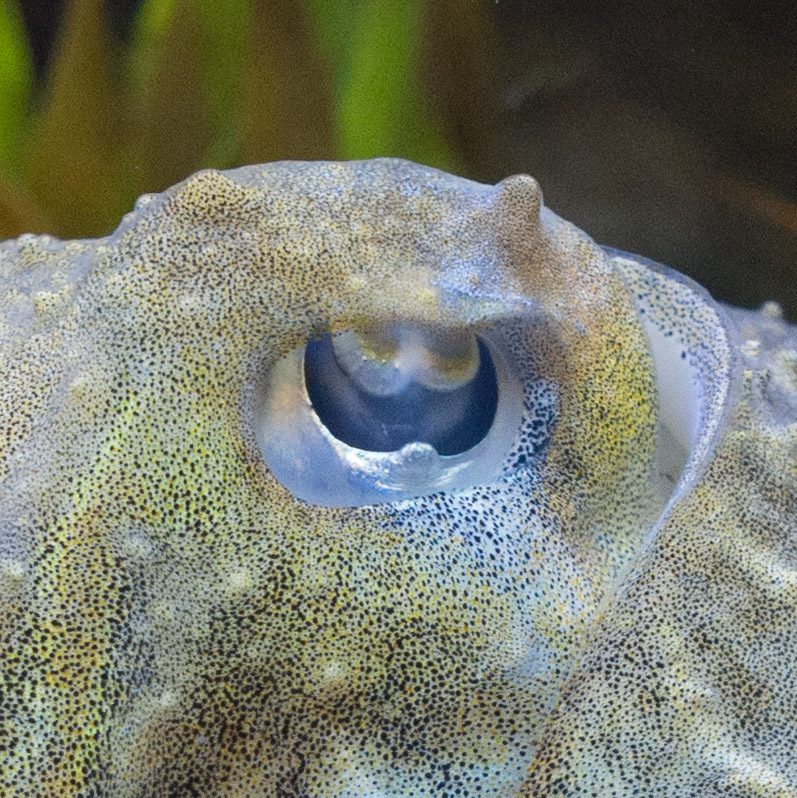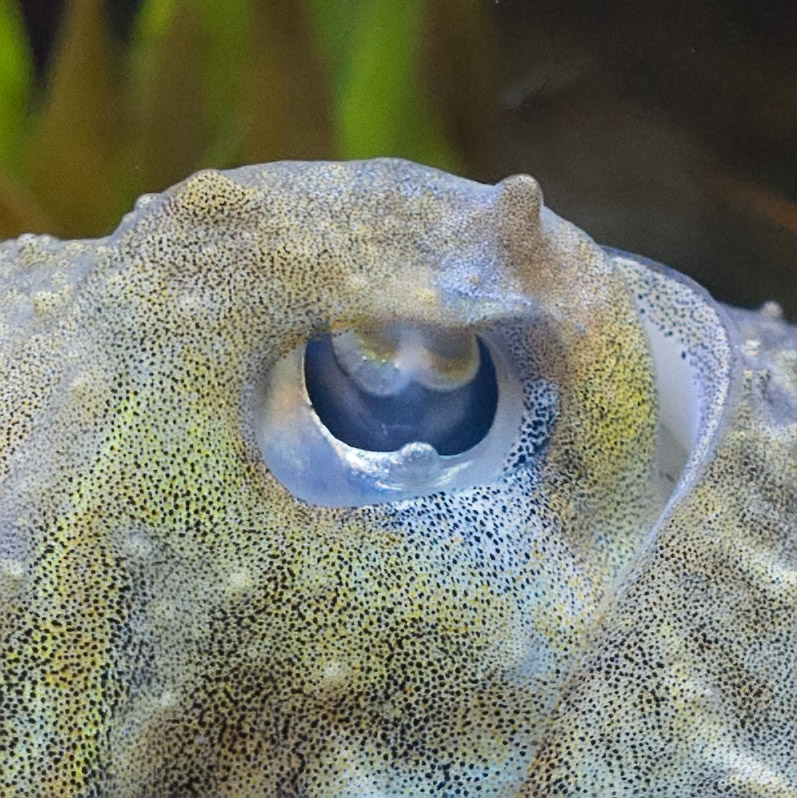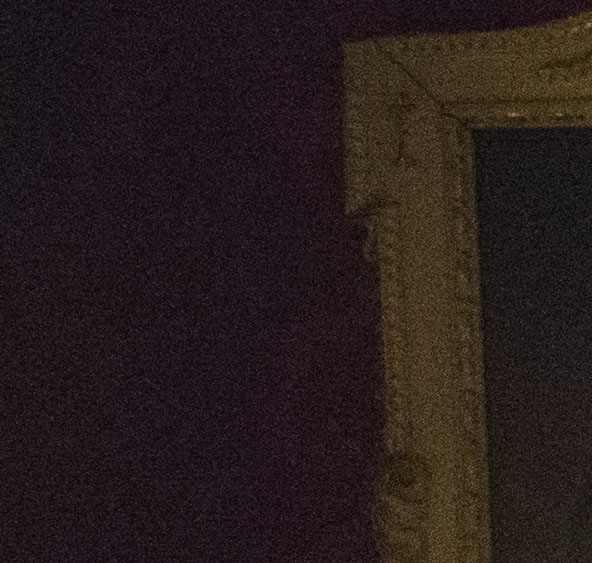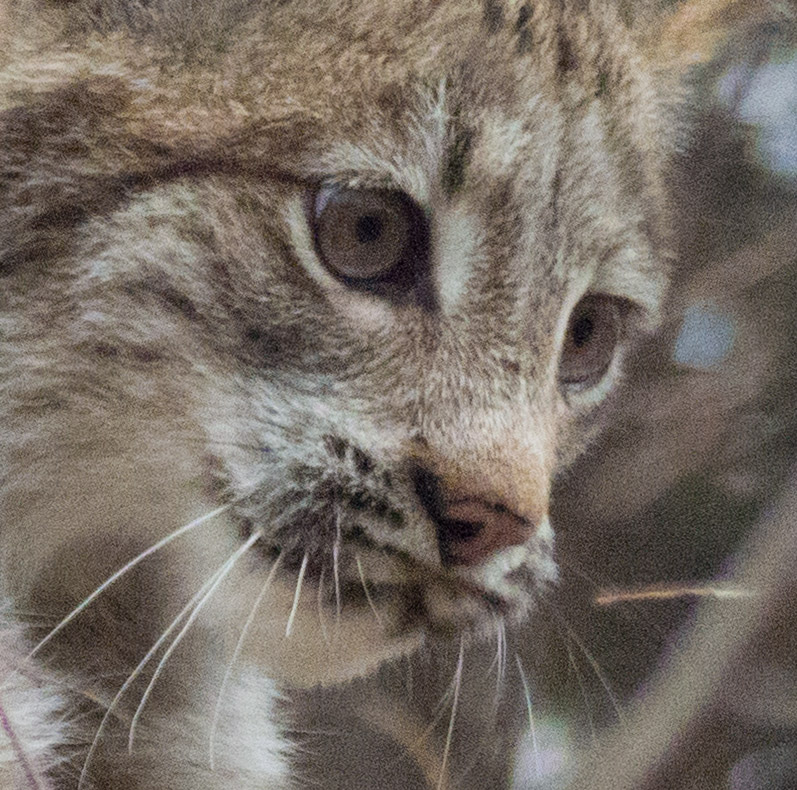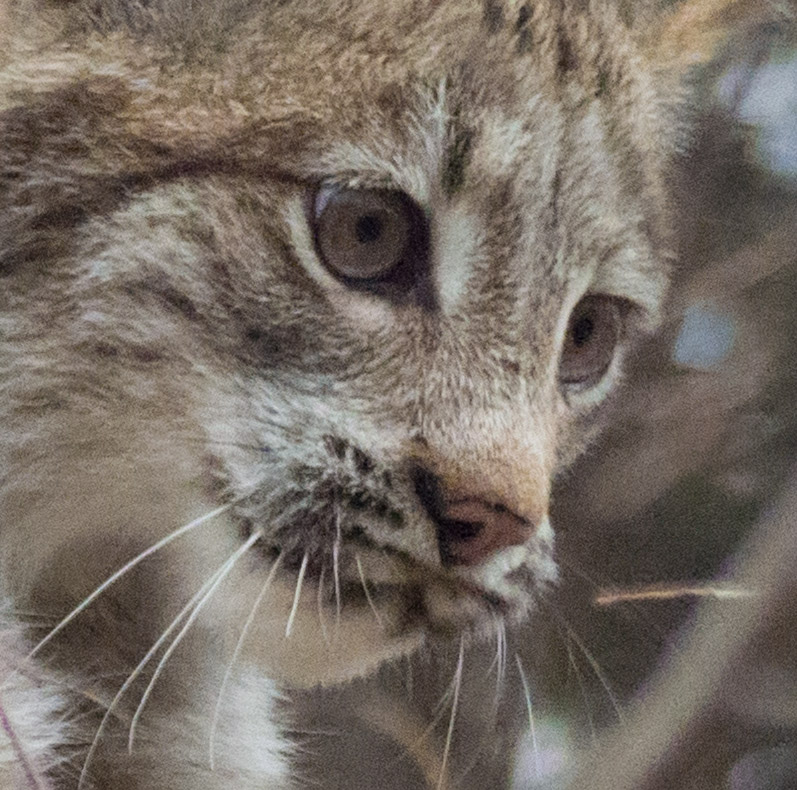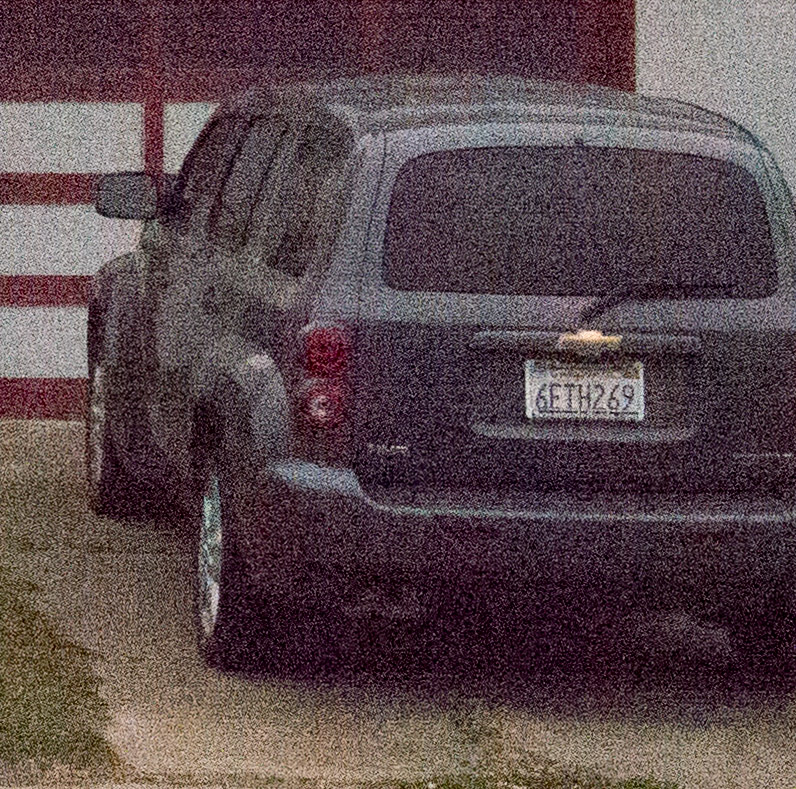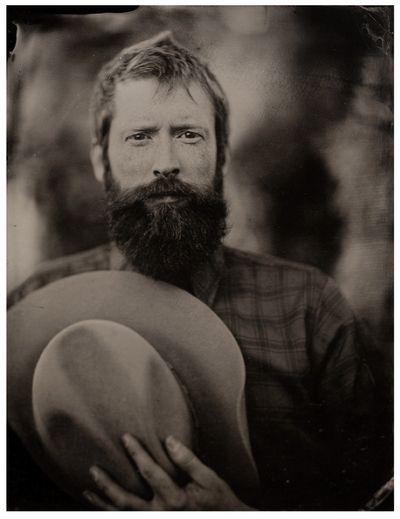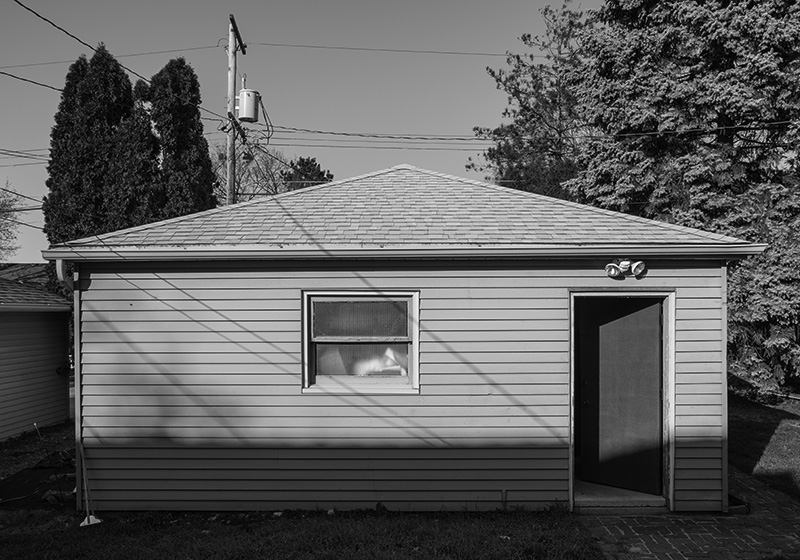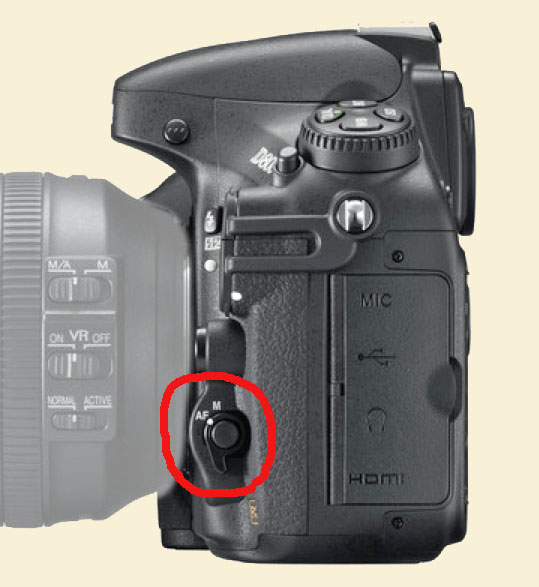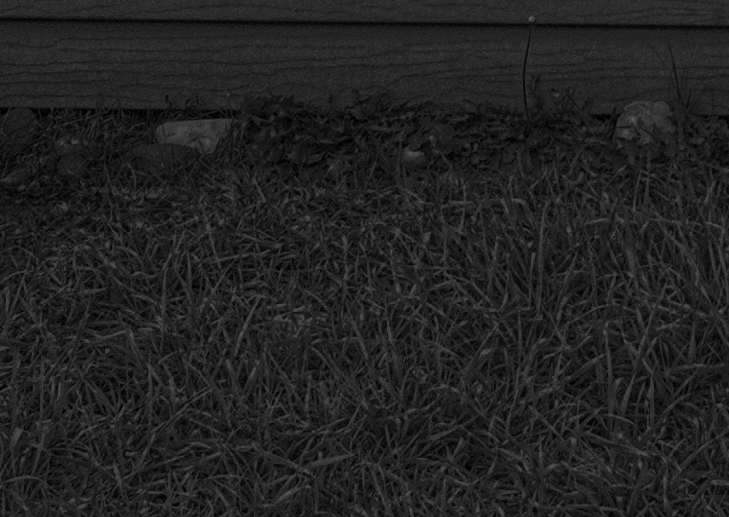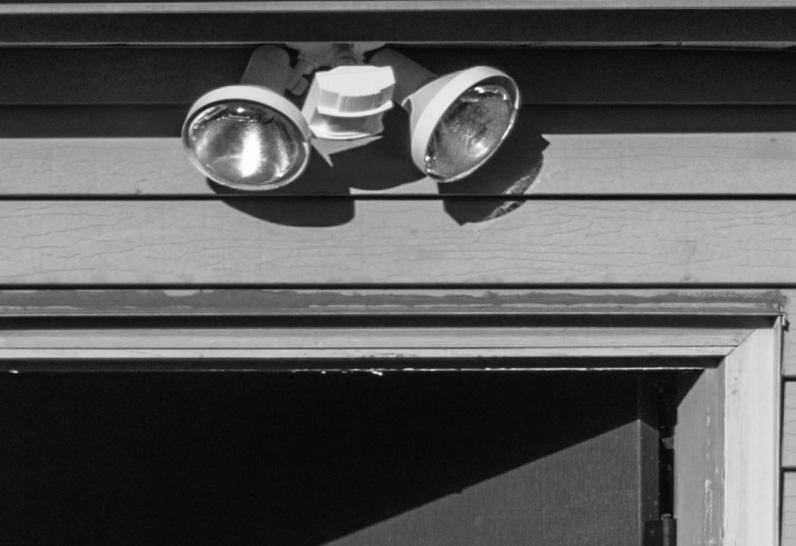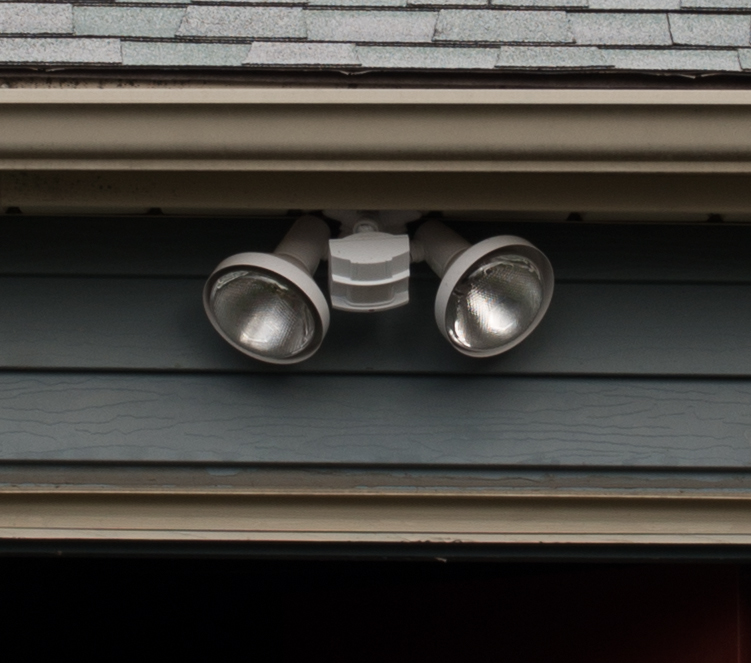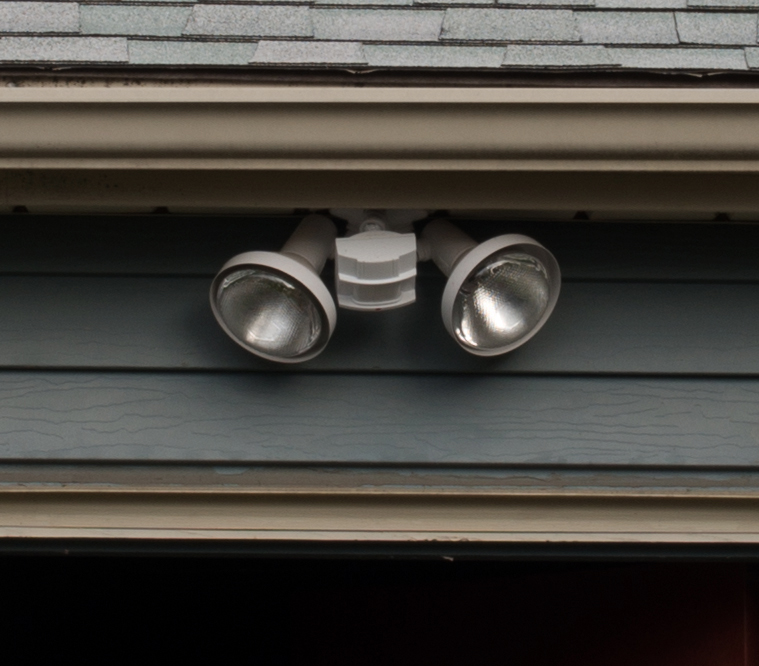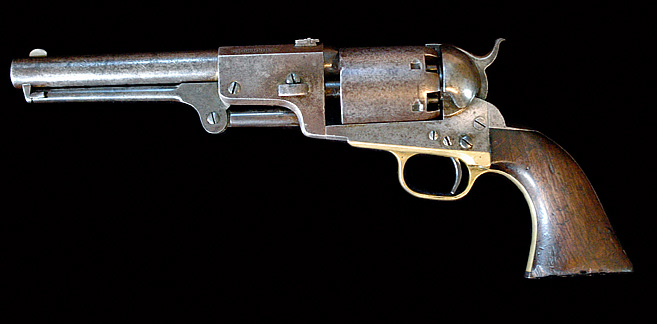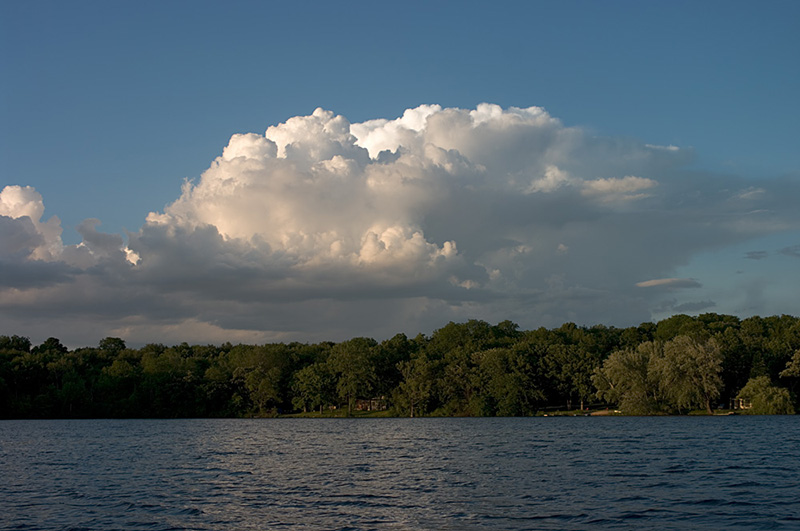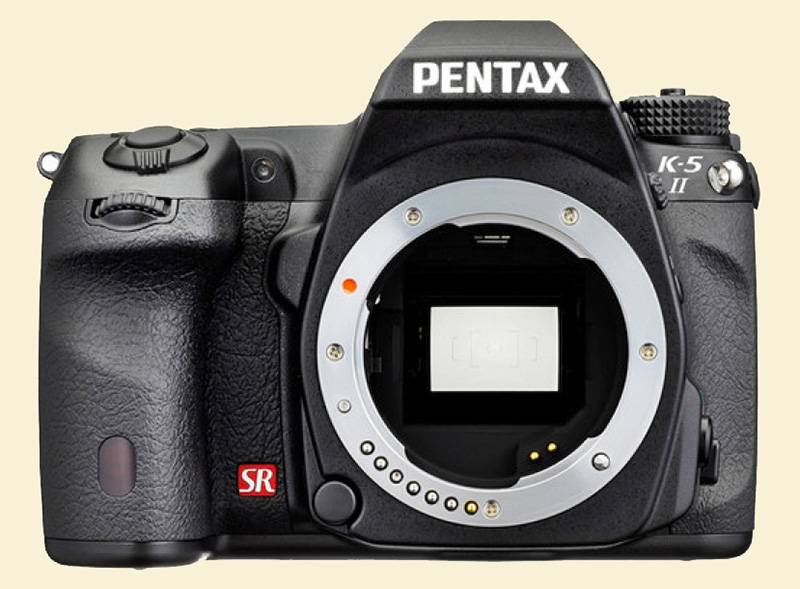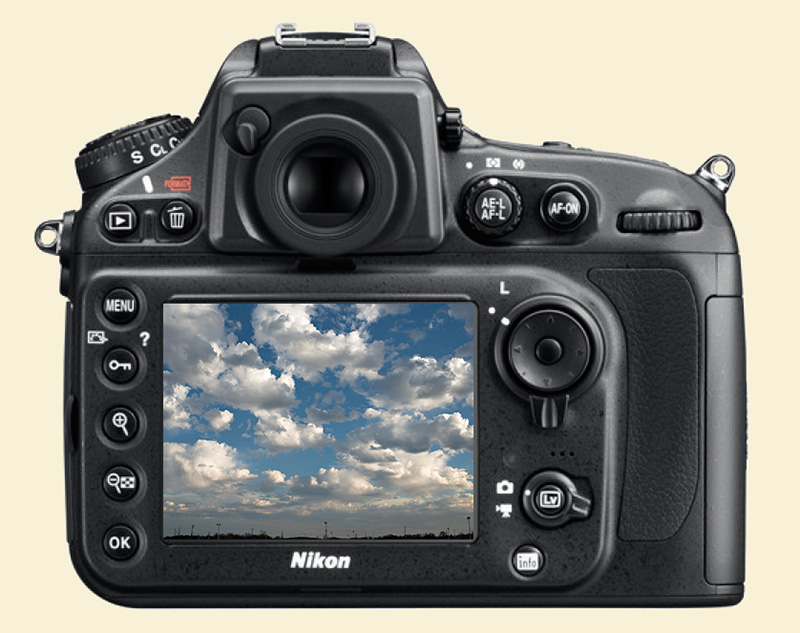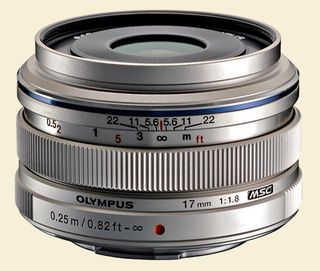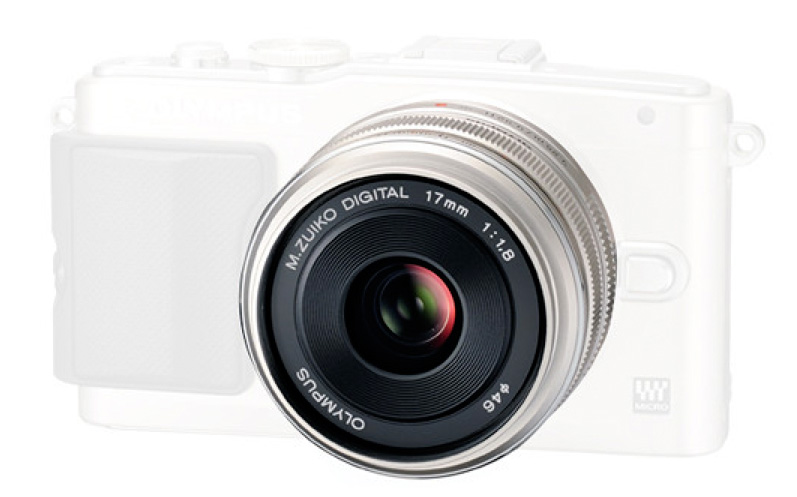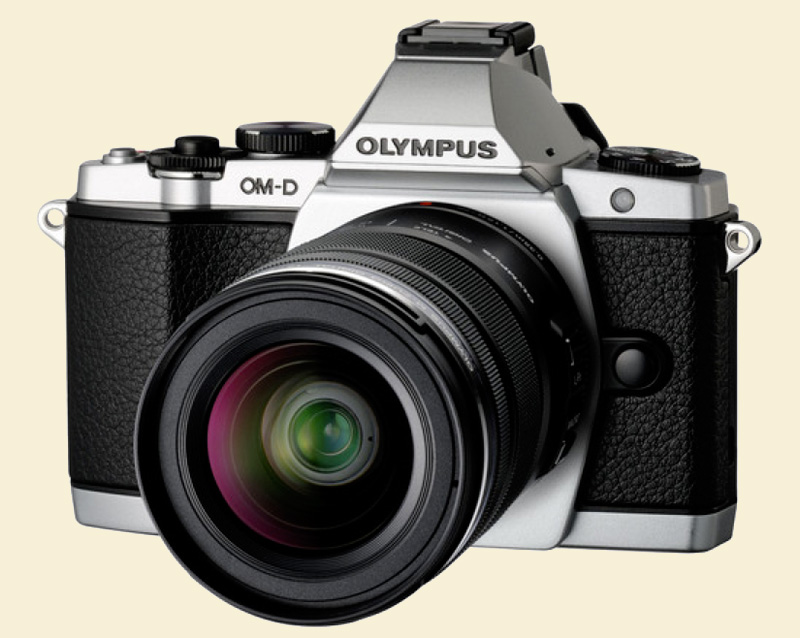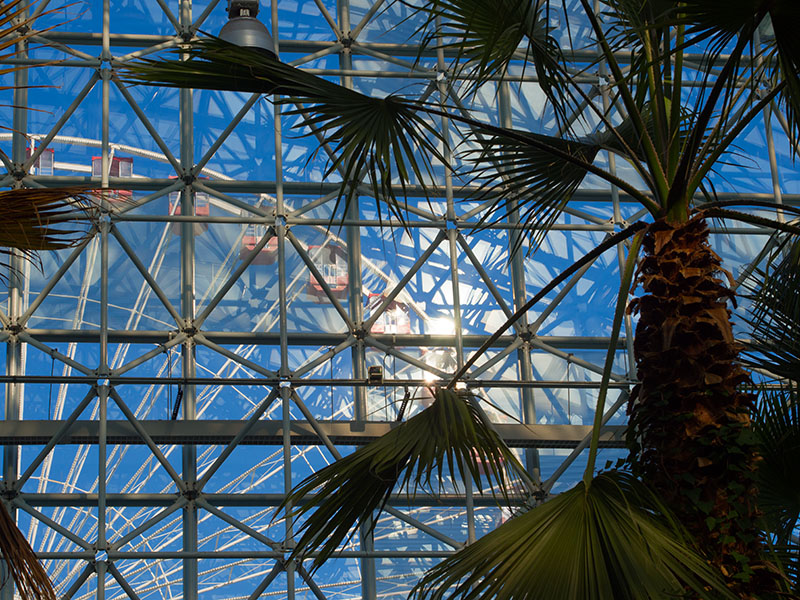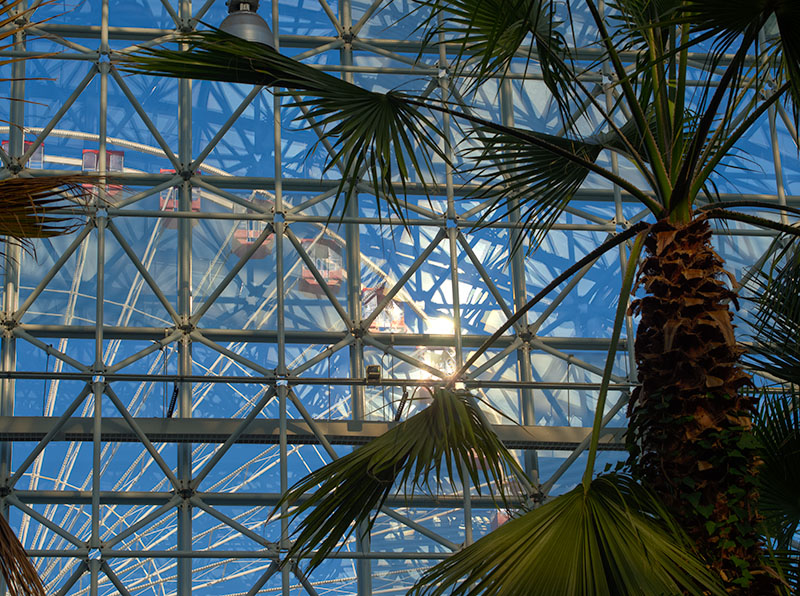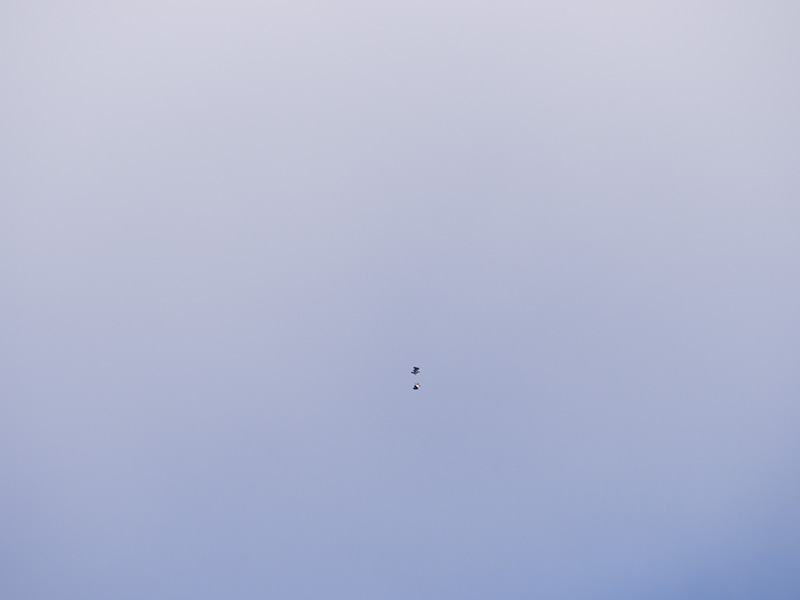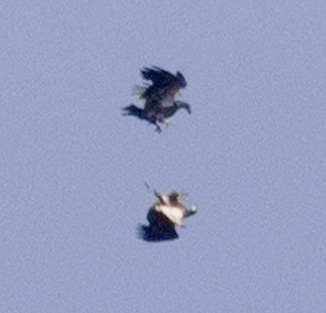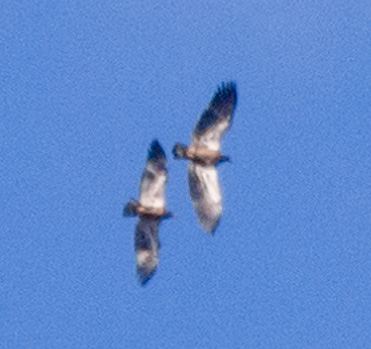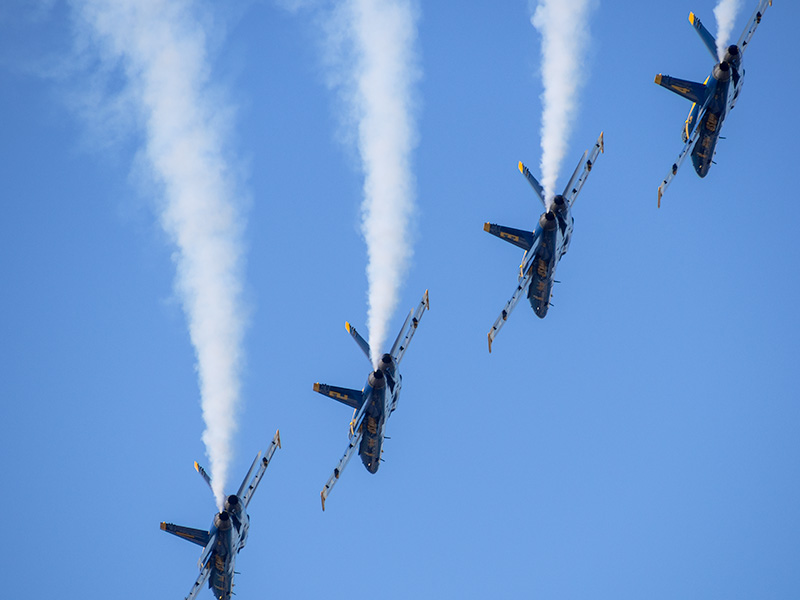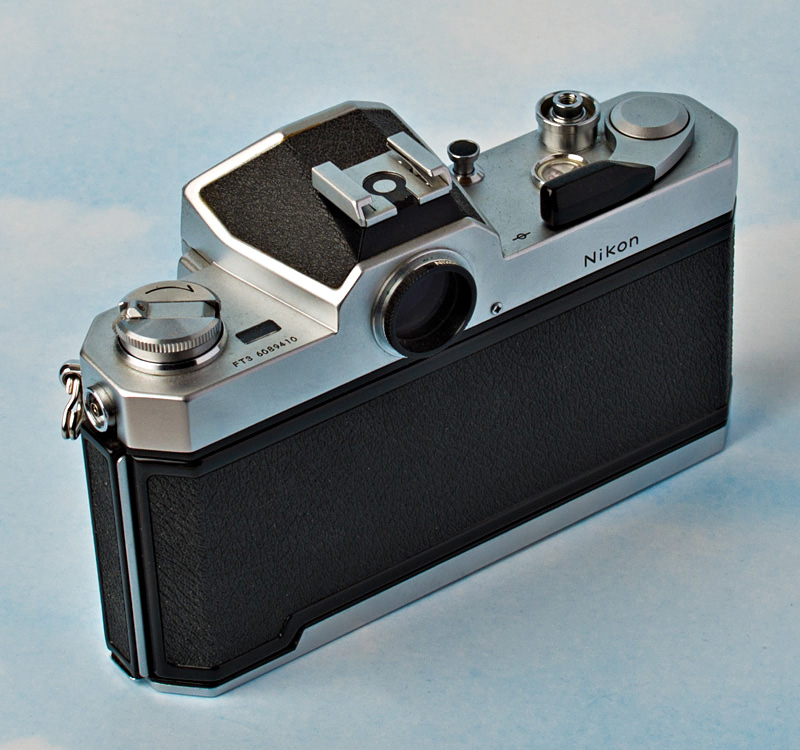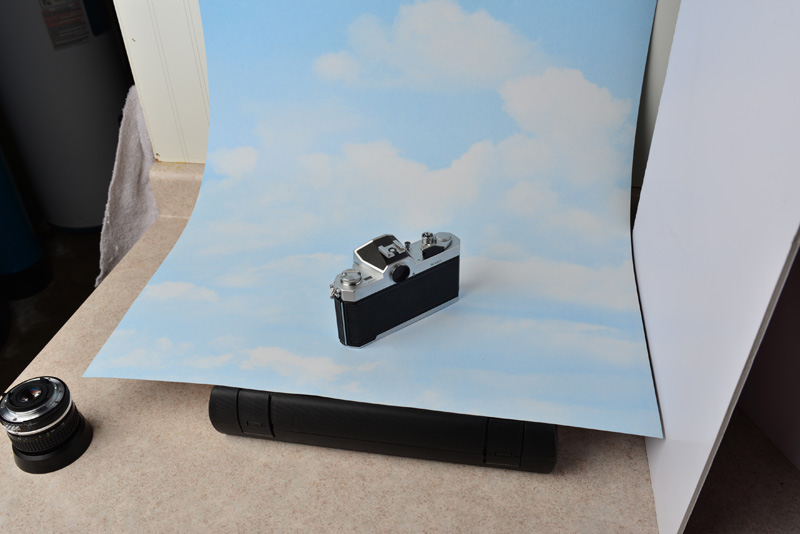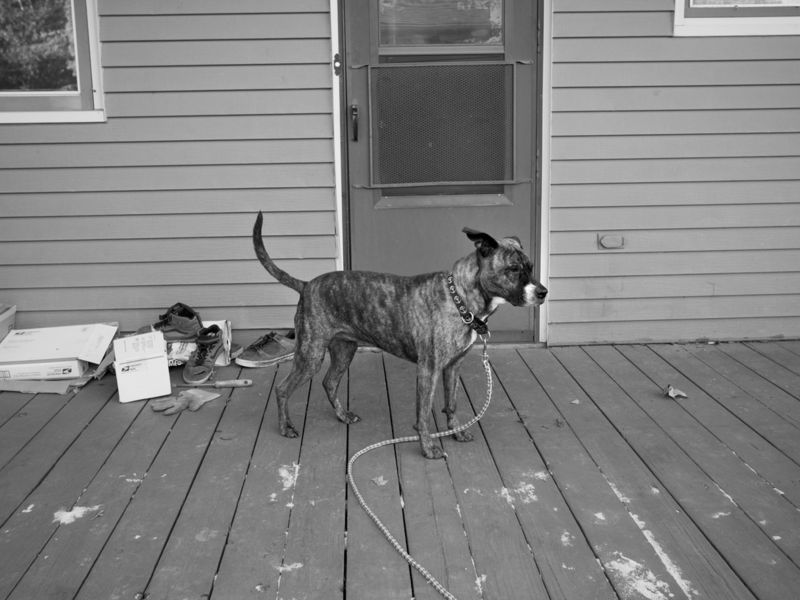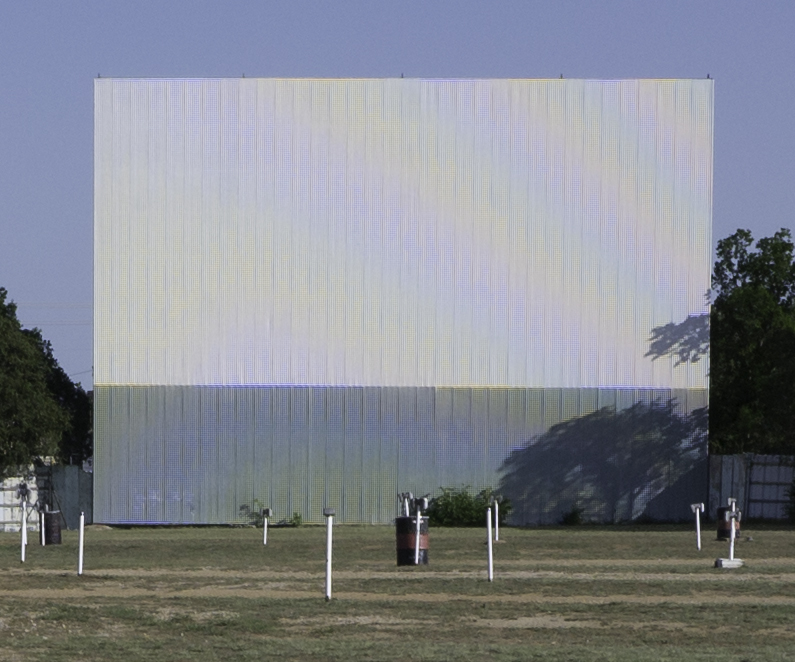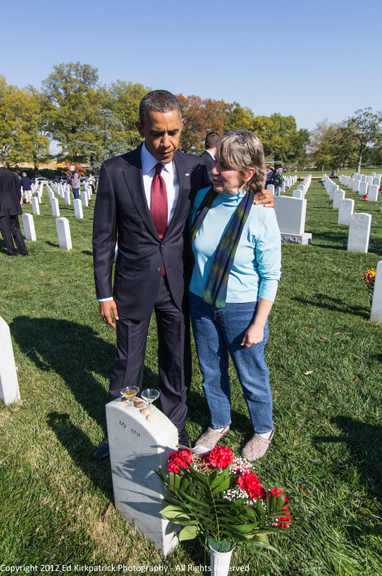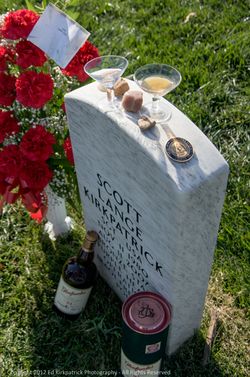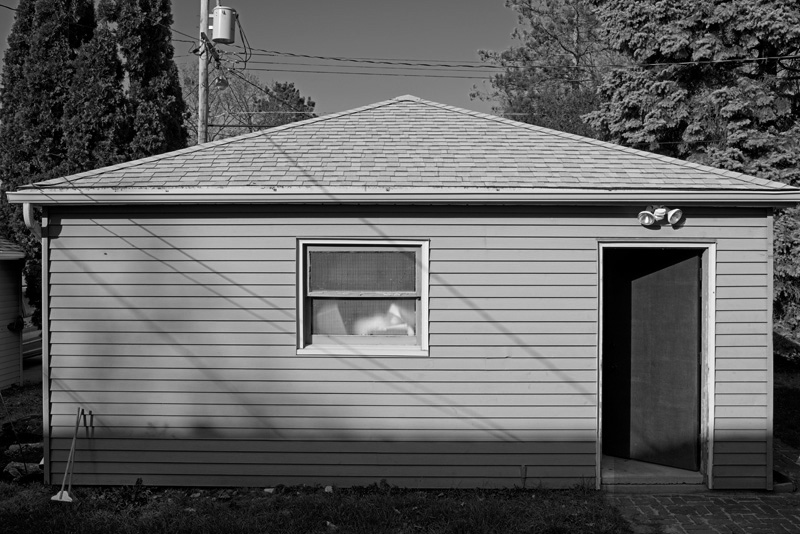 Stupid picture of garage. Upshot for today: the D800E has sufficient
Stupid picture of garage. Upshot for today: the D800E has sufficient
dynamic range for really good B&W. Finally. And Woo-hoo.
Where to start.
To begin with, I got lucky today. It dawned as gray and drab as it's been since the camera arrived, but then after noon it cleared up and I got a solid two plus hours of cloudless skies and full sun.
Then it clouded up again. But the clouds were pretty this time:
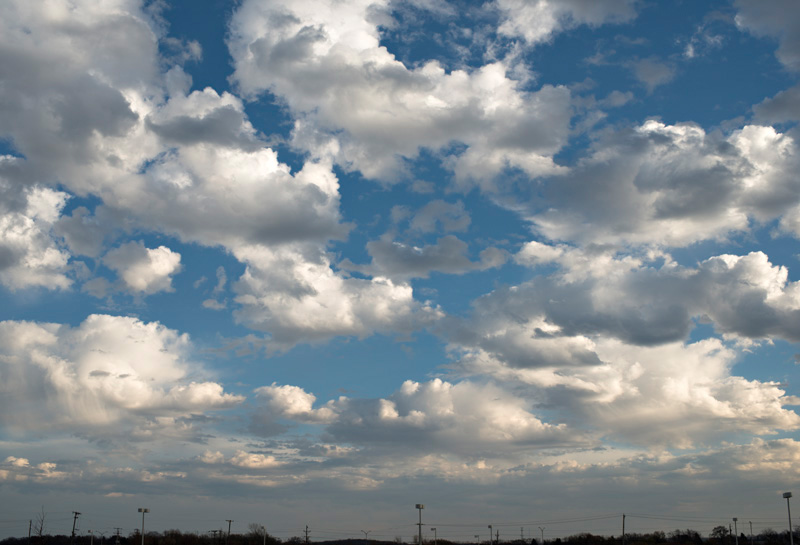
And then I went around taking "stupid shots." You know, where you just wander around and point the camera at $#!T and take meaningless pictures of nothing because that's what's there. You find yourself taking pictures of parked cars and pigeons and random manmade objects in public spaces.
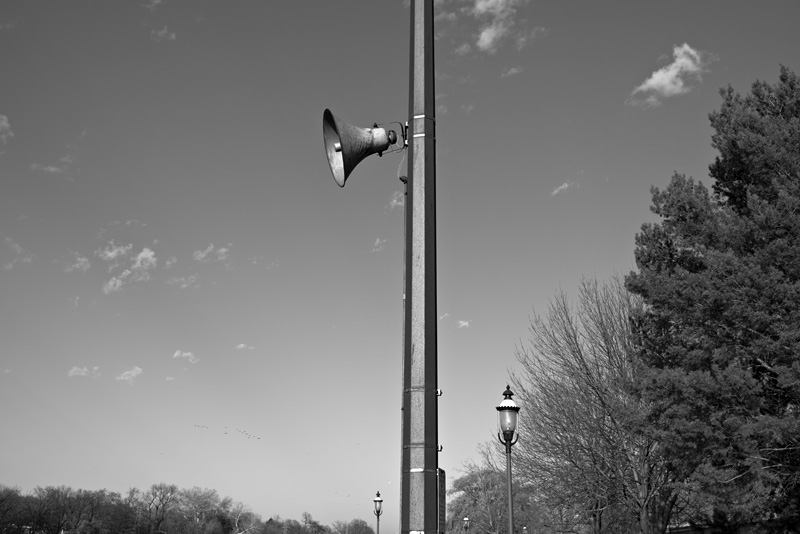 Seriously? (At least I shot at ISO 100 all day today.)
Seriously? (At least I shot at ISO 100 all day today.)
I hate that. But I seem to do it a fair amount.
So you know this is about an imaging system, right? (If you're just joining us, I've rented a Nikon D800E and an AF-S Nikkor 35mm ƒ/1.4G from Lensrentals.com for five days. Sunday is my last full day.) We can't look at the sensor/camera and we can't look at the lens. If you want to know about a lens you have to use it on many cameras
and if you want to know about a sensor/camera you have to use it with many lenses. With only one camera and only one lens, I can only look at the two together.
So let's look at a couple of files. Not pictures, just files. Because that's what I do when I get to know a camera: I just go around throwing torture tests at it, trying to get it to fail. It's only when you know where it fails that you can dial back and get a handle on where its limits are.
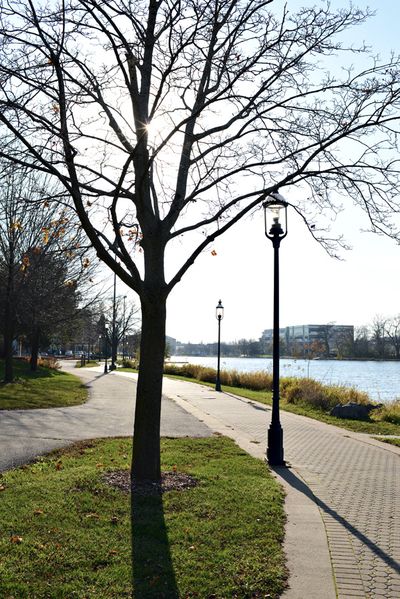
So I do a shot like this, just to see how much detail the camera/lens will see in the tree-trunk. I was surprised:
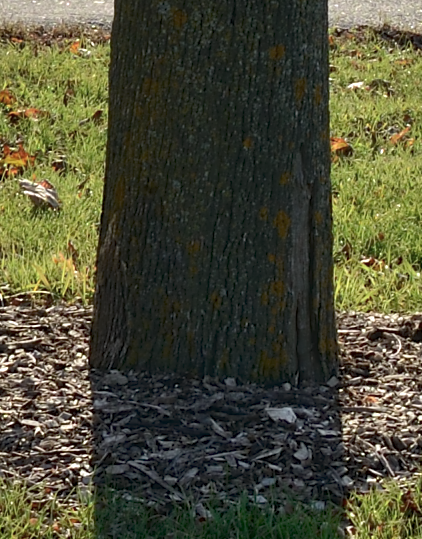 (Detail from photo above)
(Detail from photo above)
That's pretty impressive. The camera and lens is not only getting texture, but the color of the lichen on the shadowed side of the silhouetted tree.
Then take this shot:
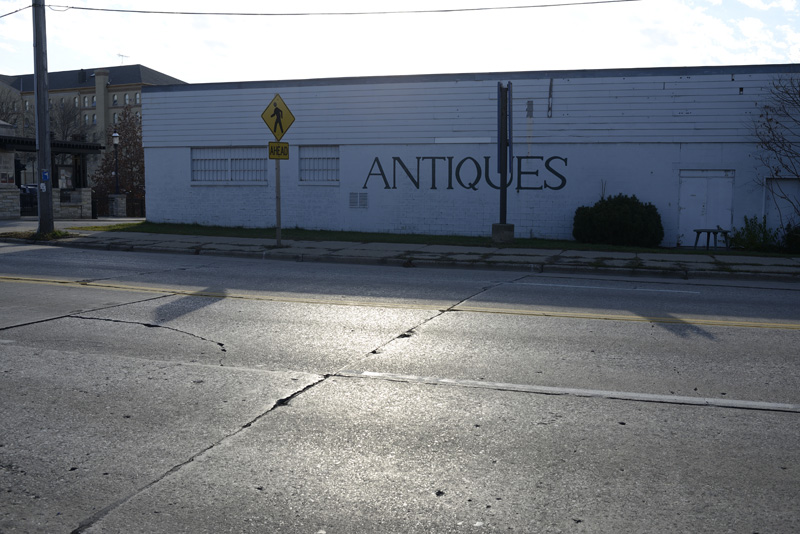
Standard torture test. Right into the sun, which was centered directly above the frame, about as far above the top edge of the frame as the roof of the building is below it. There were some scrummy clouds coming up from below, but the sun was shining brightly directly into the lens. Flare test. I've done this a hundred times if I've done it once. I was thinking, wonder if it'll show ghosts; wonder how well it will do with that word "ANTIQUES." I was convinced that telephone wire would be "broken" by an area of flare.
Well, it showed every brick in that wall and every brushstroke in the sign. So it did pretty well. Then I started thinking, hmm, wonder if there's any detail in that little bush? Most lenses don't do that well with shadow detail with full sun just out of the frame and dead ahead. (I wasn't using the hood.)
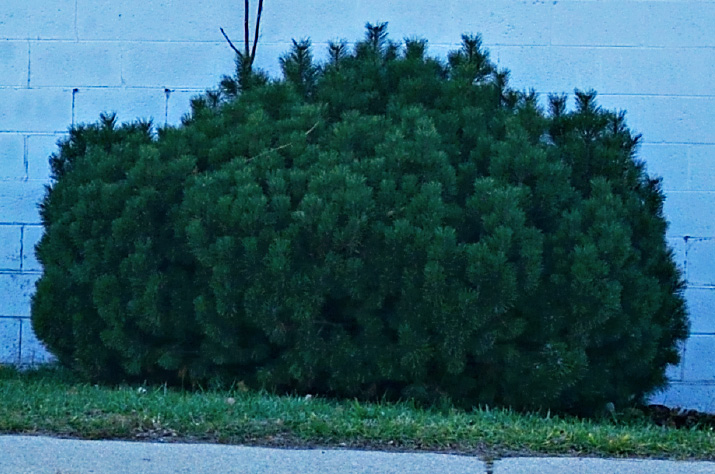 (Detail from photo above)
(Detail from photo above)
This is manipulated, but still. There's even detail in the more shadowed lower part of the bush.
Then I thought, hmm, there was a band of clouds just above that building, wonder if I can recover any of that? So I cranked the sliders again and the clouds showed up.
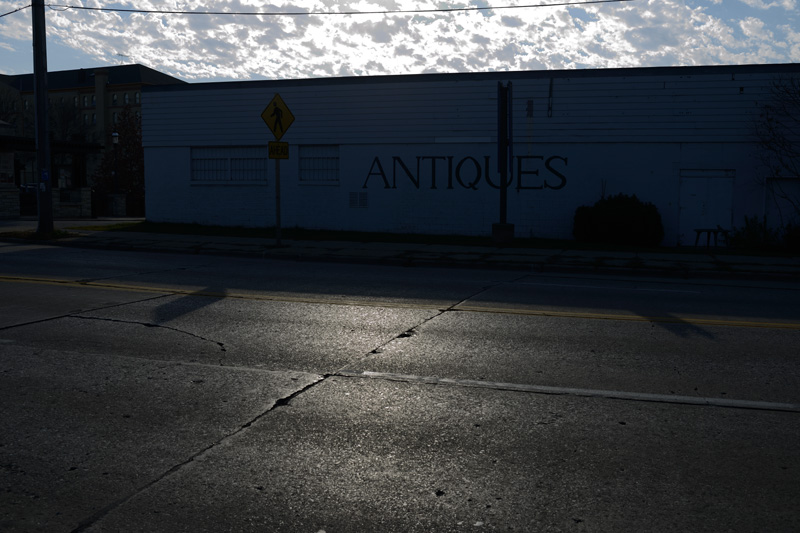
This is with exposure set at –2 and "Highlight Protection" cranked all the way over in NX2. And there's some blowout, of course. But this was really bright—there's way more here than I could see with my eyes. The amount of information this file maintained is extremely impressive in my experience.
Okay. Then, repeat about six more times, with various other stupid picture tests.
• • •
As usually happens when I'm "supposed" to be out trying out a camera, sooner or later I just get into it and start shooting for myself as usual. I don't seem to be able to help this. I just get into "picture seeing mode." You know how it is.
Today I could kick myself for missing two great opportunities—I could have gotten the owner of a local Greek restaurant out in front of his establishment, and then there were three oversize Wisconsin Energies trucks working all bunched together that I could have done some cool things with.
But here are a couple for you.
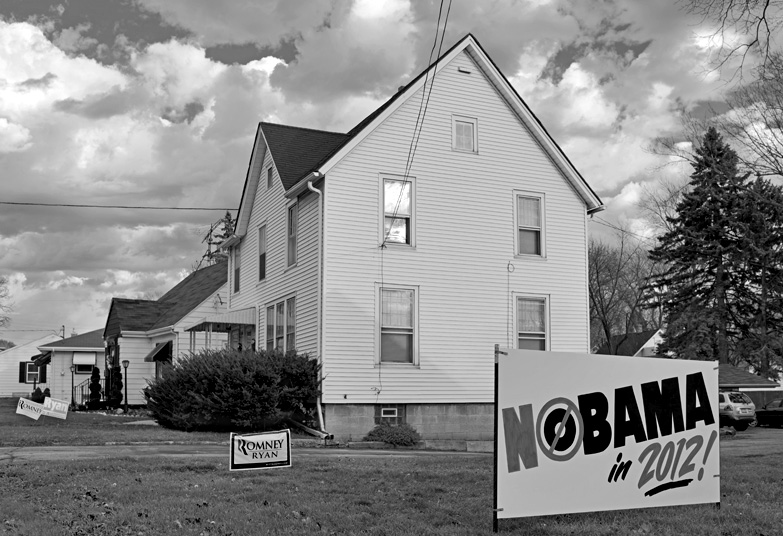
First, a few of my fellow Waukeshavians exercising their right to express themselves. And then this neo-Romanesque lannon-stone church, the First Baptist, which you might recognize from a past TOP appearance...that one in a Canon camera trial. I know a lot of you would probably like this better in color, but I ain't showin' it to you that way. Hehe.
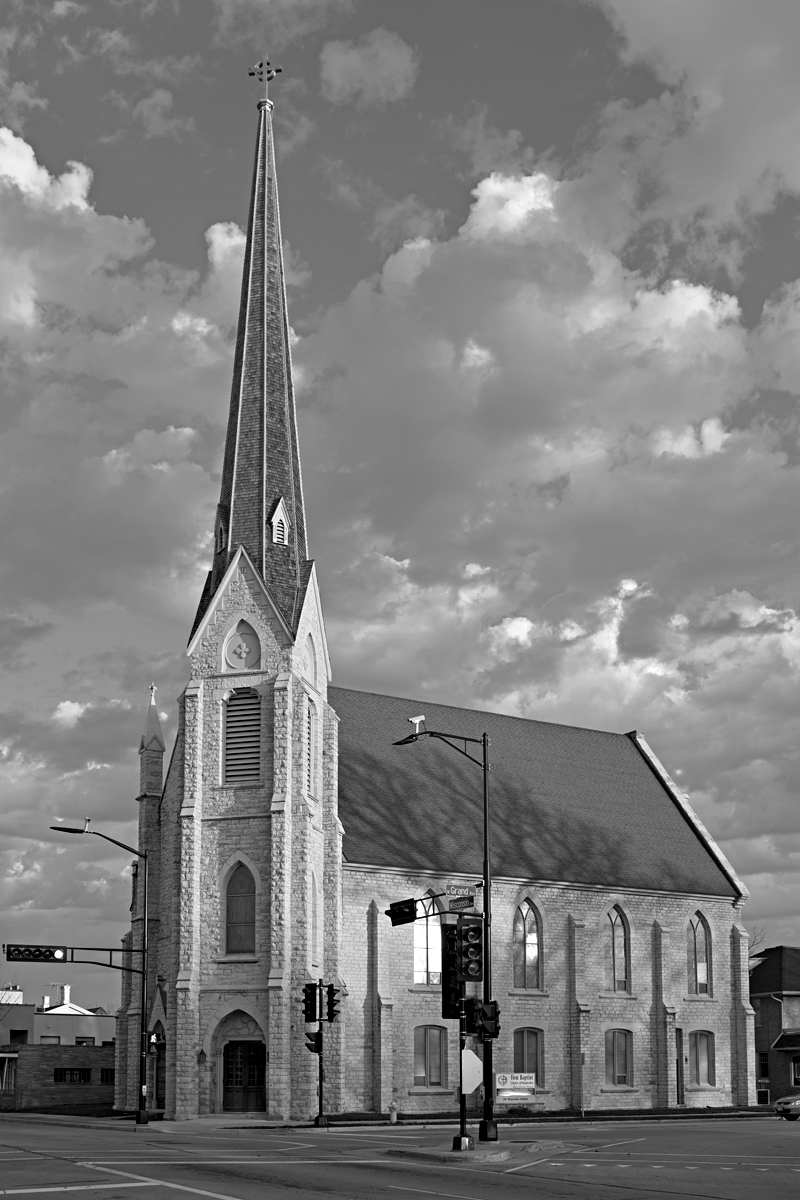
I like the shadow of the tree.
So you know, throughout much of this evening I was rehearsing in my head some of the many superlatives I might use to praise the D800E's dynamic range (or exposure range, as Ctein still prefers). Incredible; gobsmacking; deeply wonderful; gratifying. Etc. But you know, when you get right down to it, this is really just the first digital camera I've used that has DR that's adequate*. Without going to extreme measures. For black and white, at least. The kind of black and white I like. Adequate. That's the exact term, and it alone is reason for excitement and celebration.
Mike
*UPDATE Sunday evening: Whoops. As Ben Ng pointed out, I used the wrong word. (Writers hate when that happens.) The word I wanted was "sufficient."
Original contents copyright 2012 by Michael C. Johnston and/or the bylined author. All Rights Reserved. Links in this post may be to our affiliates; sales through affiliate links may benefit this site.
(To see all the comments, click on the "Comments" link below.)
Featured Comments from:
Larry Gebhardt: "Your shadow torture tests show the same thing I have found. Not only is
there detail in the shadows, but there isn't pattern noise. Other
cameras come close when you look at just the numbers, but fail to give a
clean and useable image."
Alex (partial comment): "Tell us, how did you process these for black and white? Nik Silver Effects?"
Mike replies: I should have mentioned that. The conversions above should be considered highly provisional—I've just played with a few files in Photoshop CS5 (I don't have CS6) and ACR 6.7.0.339 so far. (Of the two, I prefer ACR, but then, I love ACR—it's really my home editing program these days.) I have no current special conversion programs and I did the ones you see here hurriedly and rather crudely. (I was busy yesterday.) For one thing, these were done with an eye on producing these little 800-pixel-wide simulacra for the site. If and when I print any of these, I'd work much more carefully and at much greater length at getting the conversions right. I suspect you can work at post-processing black and white images just as much if not more than you would on color images.
I do have a little book here (publishers inundate me with review copies of all the latest technical books) called From Oz to Kansas that purports to be an overview of "Almost Every Black and White Conversion Technique Known to Man" (the book's subtitle). If that's what it turns out to be, I'll be going through it to learn a little more about the available conversion methods.
that purports to be an overview of "Almost Every Black and White Conversion Technique Known to Man" (the book's subtitle). If that's what it turns out to be, I'll be going through it to learn a little more about the available conversion methods.
Dave in NM: "I think I'm beginning to understand what it is that makes you feel the
D800E is especially well suited to B&W photography. Based on what
you've written thus far, it seems like the key is not strictly the
appearance of the images it produces, but mainly the result of the
malleability of the files—the ability to push, pull, and massage them
with impunity. Digital Tri-X.
So, in the sense that the D800E is offering unprecedented dynamic range
and resolution in a 135 format camera, it becomes uniquely capable of displaying (emulating?) the best characteristics of B&W film.
There's room for more interpretation in the processing, and the files
respond with a graceful flexibility. It's subtle, but I think that's
what you're reacting to in a positive way.
Go for it, Mike. Keep a little camera for the self-conscious times."
Mike replies: I think that's right, Dave. I hope I'm not implying that other cameras might not rival this one (how would I know?) or that other people haven't done nice B&W conversions (of course they have). I just haven't been satisfied prior to this with the B&W possibilities for my own work of the limited subset of cameras I've tried. Also, don't forget that I haven't even gotten to the other 50% of the process yet: printing. That's a whole 'nuther 55-gallon drum of worms.
Mark: "This digital stuff is a little confusing to me; the only digital pics I take are with my phone. So, just to be clear, the B&W photos weren't taken using using the camera's B&W mode (if it even has one); they were converted to B&W after the fact, outside the camera. Is that right?"
Mike replies: That's correct. I opened the color files in ACR (Adobe Camera Raw, a plugin for Photoshop, Photoshop Elements, and Lightroom—I have ACR 6.7.0.339, which is not the latest version), and converted them to black and white with ACR's conversion tool, which looks like this:
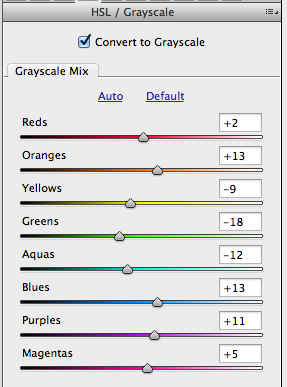
The sliders just darken or lighten those colors in the image. Obviously there are lots of interpretations available in just this relatively simple panel, and there are many other conversion tools and conversion programs as well.
In my own modest software suite (which, again, is not the latest and greatest) I prefer ACR's controls to Photoshop CS5's, because it has a slider for orange and Photoshop's doesn't. Also, I get more haloing in Photoshop. An example of this haloing can be seen in the top left corner of the top picture in this post (between the evergreen tree and the sky) which I converted in Photoshop. That top picture is sort of "getting there" in terms of a decent conversion, but it's certainly not there yet. That much haloing would be unacceptable to me in a print.
I would do an instructional post about conversion, except that I feel I'm just not an expert and have no business explaining it to anyone. However, I will say that, as with fine printing, judgement is 50% of what's needed. The other 50% is tools, techniques, and skills, and that's obviously important as well, but it's crucial to have an opinion about what you're trying to accomplish. For instance, here's a detail of the "stupid" speaker photograph as I presented it in the post:
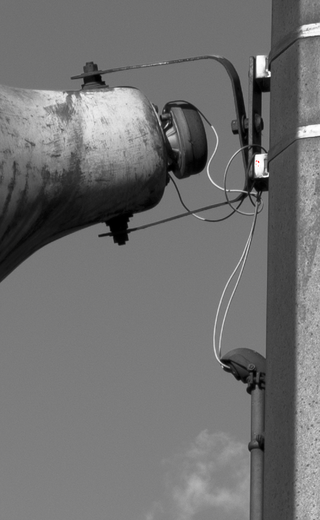
(That tiny spot of red is the clipping warning in ACR...I love this camera [g].) And here's a variant interpretation someone else might like better:
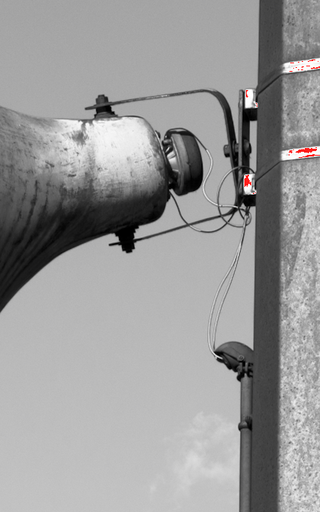
The change is just some adjustment of the blue and yellow sliders, nothing else. (And note that there's more clipping now. Obviously those red bits aren't in the file.)
I should add that converting pictures to grayscale, like Photoshop in general, is something I find to be fun. I love mucking about with it, trying different things, struggling to get things right. There are formidable polymaths of software out there, but I'm not one of them (although I probably know more about it than I think I do). To me, Photoshop brings to mind the famous Isaac Newton quote about his own ignorance:
I do not know what I may appear to the world, but to myself I seem to
have been only like a boy playing on the sea-shore, and diverting myself
in now and then finding a smoother pebble or a prettier shell than
ordinary, whilst the great ocean of truth lay all undiscovered before
me.
There's Photoshop for you in a nutshell. Or should I say a seashell. [g]
Steve L.: "I would encourage you to upgrade to CS6 so you can get the new version of ACR with 'process 2012.' Huge improvement over the old ACR, especially for beautifully drawing out the dynamic range of a sensor. I was only marginally happy with my Pentax K5 for B&W, but with the new ACR it's a B&W monster. I resisted because it meant spending the money on CS6 which I really didn't need (I had CS5), but I'm really glad I took the plunge. It's awesome, and much cheaper than a D800E."
Bojidar Dimitrov: "If it's not the resolution you are after, then a D7000 might be just the ticket. Many people claim that the D7000 and D800(e) have the same sensor, only the FF version has more area.
"I myself has a similar revelation regarding DR when I got the D7000 (10D -> 30D -> D90 -> D7000), and I've not felt the urge to upgrade since then. Not even the D600 is tempting me.
Here are some B/W portraits."
Mike replies: Very nice Boz. Thanks. I think Gordon Lewis uses the D7000 too.
, only $149
electronic viewfinder, $169 at Amazon
electronic viewfinder, only $99 at Amazon
